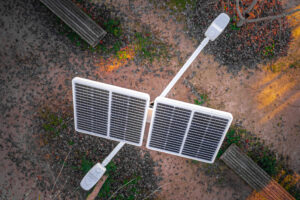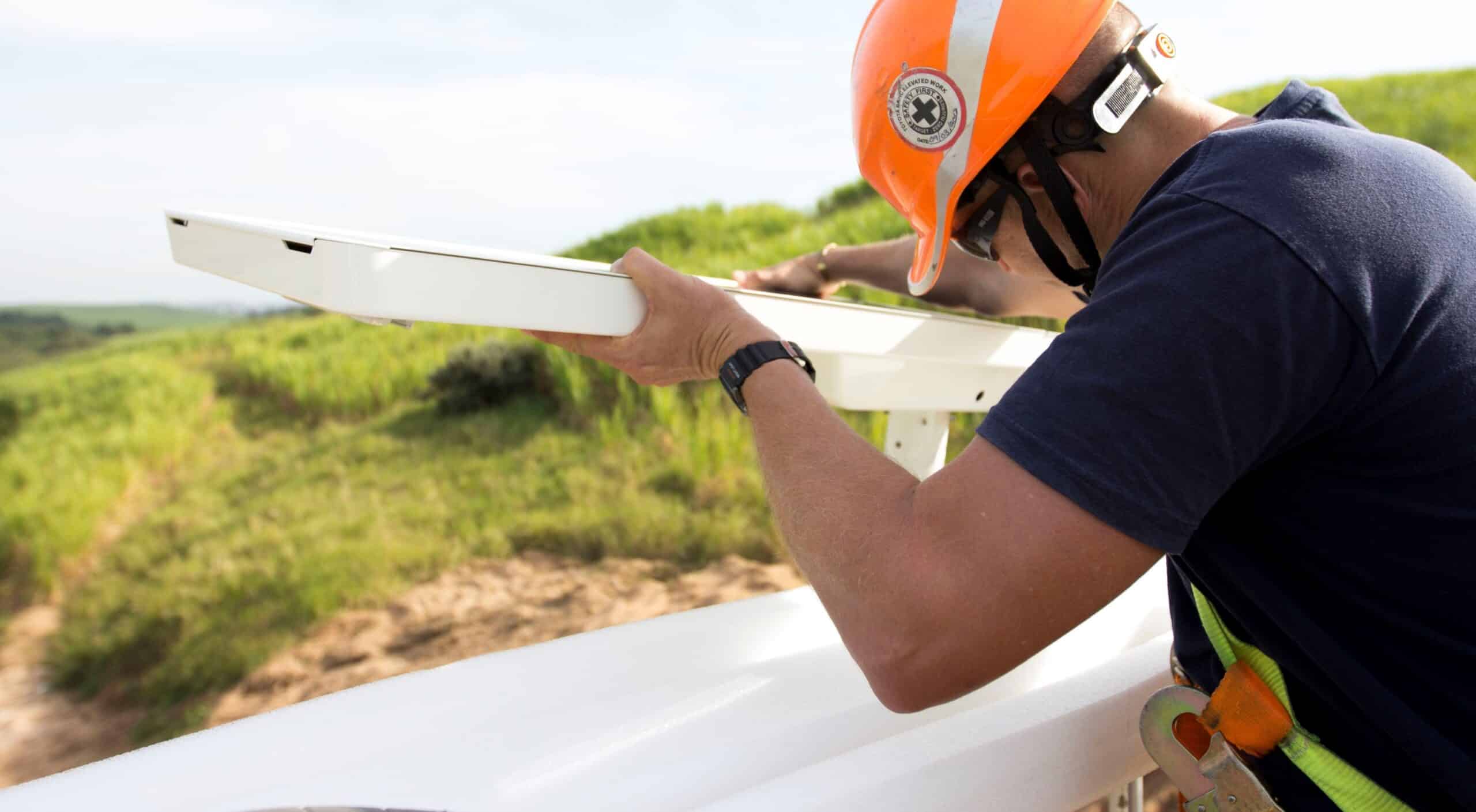About solar lighting 14 December 2023
Solar-powered street lighting is increasingly becoming a solution for the future. Powered by the sun, it provides eco-friendly lighting independently from the electrical grid. Its versatility makes it suitable for many applications: in urban, rural, or industrial areas, for both private and public sectors. Envision a countryside road lit at night, an accessible sports facility in the evening, or a secure parking area on winter nights. Nevertheless, to ensure the streetlight’s energy efficiency and effectiveness, we must consider two critical factors: the solar panel tilt and orientation. But how exactly do these components work? How can we determine the correct inclination and orientation? Are there geographic considerations? Do they perform equally well in hot countries as in those with less favorable temperatures and climates? We’ll share all the information you need to become an expert on the subject.

First, let’s specify the term tilt. It refers to the angle between the panel’s surface and a horizontal plan (like a pole, the ground, or a roof). For optimal solar energy capture and maximum efficiency, solar rays must hit the panels perpendicularly, at a 90-degree angle (see the pattern below).
However, this optimal tilt depends on the latitude, location, and seasons. Please note that you cannot adjust the angle of the fixed solar panels we offer on poles. Therefore, the tilt angle chosen at the time of installation must be optimized based on the latitude and location to maximize the capture of available solar energy in that region. Thus, although the tilt is stationary, it is set to maximize the solar energy available for lighting.
Generally, in France, it is recommended to set the tilt angle of solar-powered street lamps between 30 and 35 degrees. This angle represents a well-considered compromise that accounts for the seasonal variations in the sun’s position, thus ensuring a stable energy yield throughout the year rather than being optimized for a specific season. For a solar street lamp installed in France, this tilt assures that it will not accidentally turn off in winter due to insufficient electrical production. However, it is essential to note that the annual amount of solar radiation varies by region.
At Sunna Design, our engineers adopt a slightly different approach, developing products to suit various zones and configurations. Our deep understanding of the challenges of solar lighting in different seasons informs this approach, such as the need for greater light intensity during longer winter nights. In summer, shorter nights with less lighting demand compensate for the less optimal energy capture due to the tilt. Additionally, our tilt choice is tailor-made to the specific energy consumption of each project’s lighting profile.
How can you achieve the best energy efficiency all year round? The sun’s position changes with the seasons. In France, for example, it is lower on the horizon in winter and higher in summer. Theoretically, solar photovoltaic panels should be inclined to compensate for this change and capture the maximum amount of light. In winter, the tilt angle should be steeper (almost vertical), and in summer, it should be more obtuse (almost perfectly horizontal). Choosing an angle of about 50 degrees optimizes the placement of the photovoltaic panels, enabling efficient solar energy capture throughout the seasons.
Let’s go from principles to application. The tilt of your solar panels depends on their installation location. For solar street lamps mounted on poles, the angle is fixed and requires careful consideration to ensure consistent energy production all year. A benefit of elevated placement is reduced shading risks. Still, precise panel orientation toward the sun is crucial for optimal performance.
Good to Know: Ideally, the tilt of solar panels would vary by region and season. By conducting a personalized study for your project, our experts can offer you a range of Sunna Design’s smart solar street lights, featuring adjustable panel tilting, in addition to their full configurability and many other options.
Now that we have clarified the tilt aspect. Let’s look at the orientation of the solar panel. In which direction should solar panels be oriented—South, West, Southeast, etc.? In theory, the sun rises in the East and sets in the West, no matter where you are on the planet; therefore, the general rule is that panels should face east in the morning and gradually turn westward. However, depending on the hemisphere, the sun is not in the same position at noon. In the Northern Hemisphere, the sun is to the South, while in the Southern Hemisphere, at the same time, it is to the North. Therefore, for France, panels should be oriented to the East in the morning and gradually turned towards the West via the South.
In practice, daily adjustment of the tilt angle to match the sun’s position and seasonal changes can be challenging. As a practical alternative, consider installing the panels to face the sun’s noon position consistently. This approach ensures prolonged exposure and maximizes energy capture.
Geographic location and Earth’s tilt and orbit around the sun affect sunlight duration, creating seasons and solar radiation rate variations. That’s why countries in the Southern Hemisphere are ahead in deploying solar panels, while those in the Northern Hemisphere require more thoughtful project planning due to less exposure.
For support with your project, contact our experts. They can define your needs and provide all the necessary information so that you can choose the best solution and the system most suited to your needs and requirements.
Good to Know: Sunna Design offers a complete range of services for your solar public lighting projects. Our teams assist you with the definition of your need to its conception, installation, and maintenance. They ensure project optimization for energy efficiency and standard compliance. In addition, our after-sales service is available to respond to all your inquiries, providing expert support.
